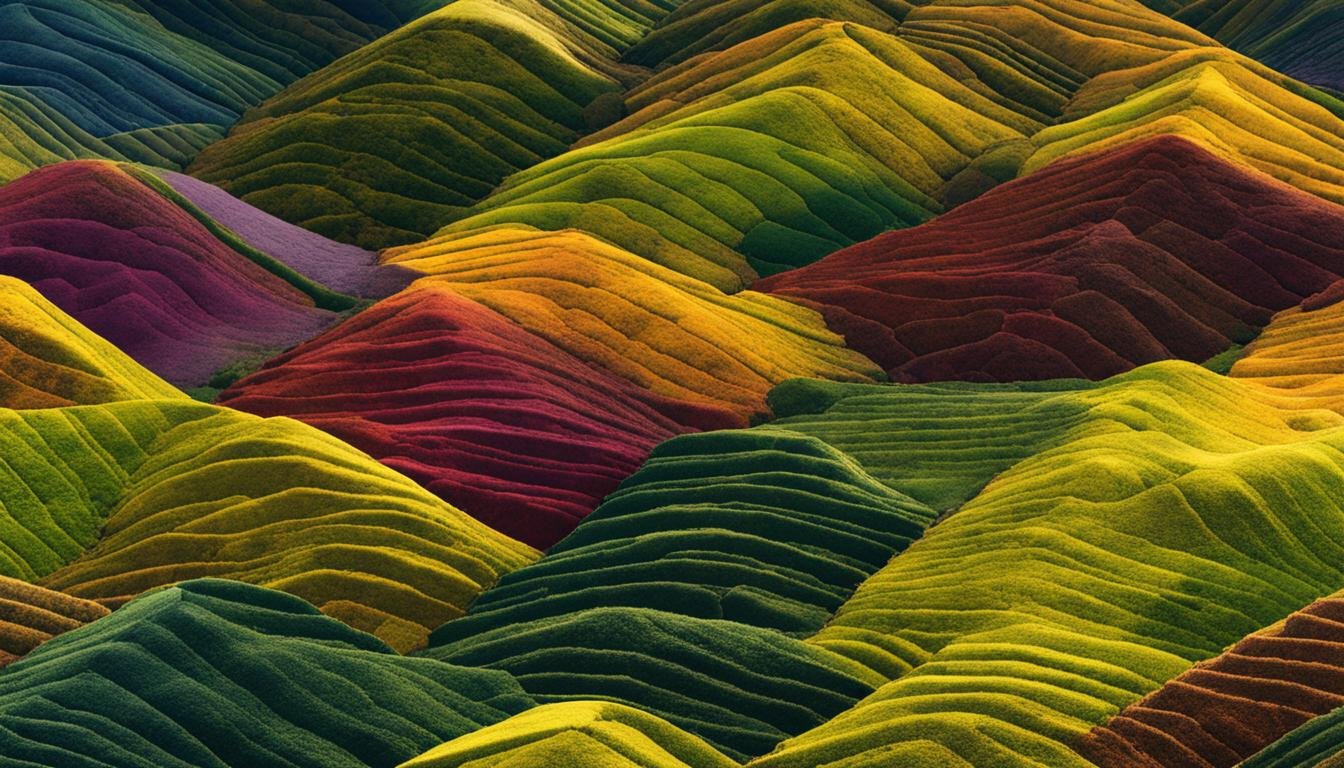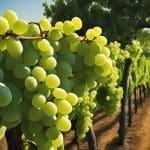This post may contain affiliate links. Please read my disclosure policy.
Chenin Blanc: The Chameleon of the Wine World
Introduction
Chenin Blanc, pronounced “Shen-in Blonk,” is the unsung chameleon of the vineyard, as versatile as it is delightful. Known for its ability to adapt to a variety of winemaking styles, this grape can produce everything from sparkling wines to lusciously sweet, richly complex, and crisply dry varieties. Let’s embark on a journey with Chenin Blanc – a wine that’s ready to surprise and charm with its multifaceted personality.
Primary Flavours
A sip of Chenin Blanc is like a kaleidoscope of flavours. Depending on its style, it can tantalize with notes of green apple, quince, and pear in its drier versions, while sweet varieties offer honey, apricot, and jasmine. There’s often a mineral undertone, reminiscent of wet stones after a fresh rain, adding complexity and depth. Chenin Blanc is a wine that never ceases to evolve, offering new sensory experiences with each taste.
Taste Profile
| Chenin Blanc | Chenin Blanc | Chenin Blanc |
|---|---|---|
| Aspect | Rating out of 5 | Characteristic |
| Sweetness | 🍷🍷 | Can range from dry to sweet, like a surprise box of assorted candies |
| Body | 🍷🍷🍷 | Medium-bodied, as comforting as a soft blanket on a cool evening |
| Tannins | ☆ | Virtually non-existent, smoother than a silk scarf |
| Acidity | 🍷🍷🍷🍷 | High and zesty, like a lively salsa dance |
| Alcohol by Volume | 🍷🍷🍷 | Typically around 12-14%, as welcoming as a warm smile |
Growing Regions
Chenin Blanc is a globetrotter. While its heart lies in the Loire Valley, it’s made itself quite cozy in South Africa, where it’s known as Steen. Each region imparts its unique twist, with the Loire focusing on minerality and elegance, and South Africa often going for bolder, fruit-driven styles. It’s like Chenin Blanc has a summer home in each hemisphere.
Origin and International Fame
The story of Chenin Blanc is steeped in French winemaking history. It’s been hanging around the Loire Valley since at least the 9th century, making it one of the old-timers of the grape world.
This grape has seen it all – from royal banquets to modern-day bistros. Over the centuries, Chenin Blanc has remained a constant, reliable player in the ever-changing wine industry.
Serving Temperature
Serving Chenin Blanc at the right temperature is like catching your favourite band at the perfect volume – too low, and you miss the subtleties; too loud, and it’s overwhelming. For the drier, crisper styles, aim for about 7-10°C (45-50°F).
This cool temperature highlights its vibrant acidity and fresh fruit flavors. For the richer, sweeter versions, a slightly warmer 10-12°C (50-54°F) allows the complexity and sweet nuances to shine through. It’s all about finding that sweet spot where Chenin Blanc can sing its heart out.
Glassware
Choosing the right glass for Chenin Blanc is like picking the perfect venue for a concert. For the lighter, zesty styles, a smaller white wine glass helps to focus the aromas, delivering each note with clarity and precision.
For the fuller, richer styles, a larger glass with a bit more room allows the wine to breathe, giving a full performance of its aromatic range. The right glassware can turn a simple sip into a standing ovation.
Decanting and Ageing
Chenin Blanc is a wine that can be enjoyed young, showcasing its fresh and fruity character. However, higher-quality examples, especially from the Loire Valley, possess excellent ageing potential. These wines develop honeyed, nutty nuances over time, revealing a different aspect of the grape’s personality. Decanting is generally not necessary for Chenin Blanc, but older, more complex wines can benefit from it.
Food Pairings
Chenin Blanc’s versatility shines in its pairing potential. Dry styles pair wonderfully with seafood, light salads, and chicken dishes, while the sweeter versions are exquisite with spicy Asian cuisine, rich pâtés, or fruit-based desserts. For vegetarians, Chenin Blanc complements dishes like vegetable curries, stir-fried tofu, and fresh spring rolls. Its ability to pair with a broad range of foods makes it a favourite for culinary experimentation.
| Chenin Blanc | ||
|---|---|---|
| Country | Wine Label | Varietal Name & Style |
| France | Domaine Huet | Elegant, Minerally Vouvray |
| South Africa | Ken Forrester | Rich, Fruity Stellenbosch |
| USA | Foxen Vineyard | Vibrant, Expressive Californian |
| France | Château de Fesles | Luscious, Sweet Bonnezeaux |
| South Africa | Mullineux | Balanced, Complex Swartland |
| These producers are just a few who have mastered the art of Chenin Blanc, each offering their own unique twist on this versatile grape. | These producers are just a few who have mastered the art of Chenin Blanc, each offering their own unique twist on this versatile grape. | These producers are just a few who have mastered the art of Chenin Blanc, each offering their own unique twist on this versatile grape. |
The Chenin Blanc Experience
In the world of wine, Chenin Blanc is the skilled actor, capable of playing a range of roles with finesse. From refreshing and simple to complex and aged, it offers a spectrum of experiences. Each glass is an invitation to explore the different facets of this adaptable grape, making it a favourite among those who appreciate variety and complexity in their wines.
Where does the name Chenin Blanc originate from?
The name “Chenin Blanc” originates from the Loire Valley in France, where this grape variety has been cultivated for centuries. The name is believed to be derived from the Mont Chenin in Touraine, a region in the Loire Valley. Chenin Blanc is renowned for its versatility and ability to produce a wide range of wine styles, from dry to sweet and from still to sparkling. Its history in the Loire Valley is rich, making it an integral part of the region’s winemaking heritage.
4 Fun facts about Chenin Blanc
Versatile Grape, Diverse Wines: Chenin Blanc is renowned for its incredible versatility. It can produce an array of wine styles, from bone-dry and sparkling to lusciously sweet dessert wines. This adaptability is largely due to the grape’s natural high acidity.
A Long History in France: Originating from the Loire Valley in France, Chenin Blanc’s history dates back to at least the 9th century. Its presence in this region has been a cornerstone of French winemaking for over a thousand years.
South African Transformation: While it has French origins, Chenin Blanc has become South Africa’s most widely planted grape. Known locally as ‘Steen,’ it played a significant role in establishing South Africa’s reputation as a world-class wine-producing country.
A Survivor Vine: Chenin Blanc is known for its resilience. The grapevine can adapt to various climates and terroirs, and it’s resistant to many vine diseases. This hardiness allows it to thrive in different parts of the world, producing quality wines in varied conditions.
What is Chenin Blanc similar to?
Chenin Blanc can be similar to several other white wines, depending on its style of production. Here are a few comparisons:
Dry Chenin Blanc and Sauvignon Blanc: When made in a dry style, Chenin Blanc can resemble Sauvignon Blanc, particularly in its crisp acidity and potential for displaying grassy, herbal notes.
Sweet Chenin Blanc and Riesling: In its sweeter forms, Chenin Blanc shares similarities with Riesling. Both can exhibit rich, honeyed characteristics with balanced acidity, making them excellent for dessert wines.
Chardonnay: Some oaked styles of Chenin Blanc, especially those with a fuller body and richer texture, can be reminiscent of Chardonnay. These styles often display notes of apple, pear, and hints of vanilla or toast from oak aging.
The versatility of Chenin Blanc means it can vary widely in taste and style, akin to several well-known white wines.
What are other names for Chenin Blanc?
Chenin Blanc is known by several names globally, reflecting its diverse growing regions. In South Africa, it’s commonly called “Steen,” a name deeply rooted in the country’s winemaking history. In its origin region, the Loire Valley of France, it’s sometimes referred to as “Pineau de la Loire,” although this traditional name is less common today. Historically, it was also known as “White Pinot.” These varied names illustrate Chenin Blanc’s long history and its significance across different wine-producing regions.
Which country produces the most Chenin Blanc?
South Africa is the largest producer of Chenin Blanc globally. The country has more Chenin Blanc vines planted than any other nation, with the grape being a key component of its wine industry. Known locally as “Steen,” Chenin Blanc in South Africa ranges from fresh, crisp, and fruity styles to more complex, oak-aged versions. This adaptability and the grape’s ability to thrive in South African terroirs have made it a cornerstone of the country’s winemaking heritage.
Conclusion
Chenin Blanc is more than just a wine; it’s a journey through the diverse possibilities of winemaking. It’s a testament to the adaptability and resilience of a grape that has stood the test of time and trends. So, when you next pour a glass of Chenin Blanc, be prepared for an experience that’s as multifaceted and surprising as the grape itself. It’s the wine that promises – and delivers – a delightful adventure in every bottle.
User Review
( votes)Sip smarter, subscribe now!
Subscribe for gourmet tips, event updates, travel ideas, and a free e-book on Food Pairings. Start your journey to culinary and travel excellence!













